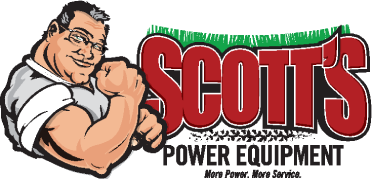Lawn Aeration Matters
 Professional groundskeepers and landscapers know that aeration can be a great way to enhance a lawn. Aeration involves piercing the soil with small holes, allowing the ground to hold more moisture and giving grass better access to what it needs to grow full and healthy. This process can make a huge difference in a short time, but the trouble comes when deciding what kind of aerating equipment to use. There are a lot of aerators out there for professionals to choose from, but it’s important to get one that’s right for your needs.
Professional groundskeepers and landscapers know that aeration can be a great way to enhance a lawn. Aeration involves piercing the soil with small holes, allowing the ground to hold more moisture and giving grass better access to what it needs to grow full and healthy. This process can make a huge difference in a short time, but the trouble comes when deciding what kind of aerating equipment to use. There are a lot of aerators out there for professionals to choose from, but it’s important to get one that’s right for your needs.
At Scott’s Power Equipment, we know it can be frustrating sifting through catalogs and articles to figure out what specific equipment you need.
That’s why we’ve put together this short article on a few of the aerators available for lawn care professionals. Read on for more information or head into one of our locations in Bridgeton, Arnold, and Wentzville, Missouri.
Types of Aerators
Core (or plug) aerators use hollow tines to mechanically remove plugs of soil from a lawn without harming it. This process helps to loosen up soil and creates a channel for air and water to flow. It also gives grass easier access to fertilizer you may be using. Core aeration can also help fight against moss growing in your grass, as the aeration process frees up compacted soil or thatch that make it hard to water to move around.
Aeration can also be accomplished with a spike aerator that uses solid tines. With this method, no plugs are removed. The ground is still penetrated to increase air, water, and nutrient effectiveness, but it’s commonly thought of as less effective than core aeration. However, spike aerators leave a generally cleaner lawn surface, meaning you don’t have to work as hard to still gain at least some benefit from aeration. Spike aerators are also less expensive than their core-removing counterparts!
Many aerators will come as walk-behind machines, making the process relatively light in terms of effort. There are also tractor implements that can be hauled for an even easier job. Manual devices similar to push mowers are effective, though they’re also time consuming. And though it’s likely to be too slow and labor intensive, you can use simple tools like a pitchfork to get the same effect as solid tines.
Soil Condition
While both spike and core aerators are effective at improving lawn health, which type of aerator you deploy comes down to the condition and composition of the soil you’ll be working on. Soil with a lot of clay is much more likely to be compacted, which is the condition we’re trying to fix with aeration. Core aerators are best at relieving these clay-heavy lawns. Spiked tines will just compact the clay further. To test your lawn for clay content, get a handful of the soil and give it a good squeeze; soil that compresses into a lump has a high clay content, while crumbly soil is high in loam and sand. Crumbly soil is easier for a spike aerator to handle.
A drawback of core aerators is that they need more precise conditions to operate effectively. You have to wait for a good amount of moisture in the soil, though too much and you’ll have problems as well. Dry conditions will have the plugs crumbling inside the tines, which will prevent the aerator from removing the soil from the ground. Too wet, and the plugs will stick to the inside of the tines. While spike aerators won’t have an issue with dryer soil, they do run into trouble in extra-wet conditions and have a tendency to compress soil.
Aerator Impact
Another consideration is how aerators will impact the soil and lawn in the long run. For example, plug aerators have the best long-term benefits. Consecutive seasons of plug removal will have growing benefits, but in the short term there’s a lot of stress generated from the process. A core aerator used at the wrong time or the wrong conditions can create issues here. The best time to aerate is when grass is actively growing, so usually during the spring and early summer, but cool season grasses should be aerated earlier in the spring or at the beginning of fall. A benefit of spike aerators is that they can be used all year long without impacting soil conditions.
Hopefully you have a better idea about what kind of aerator you need for your lawn care needs. For a look at some new and used aerating equipment, head into Scott’s Power Equipment in Bridgeton, Arnold, and Wentzville, Missouri. Come in today and let our team of courteous professionals answer all your questions and help you find what you’re looking for.
